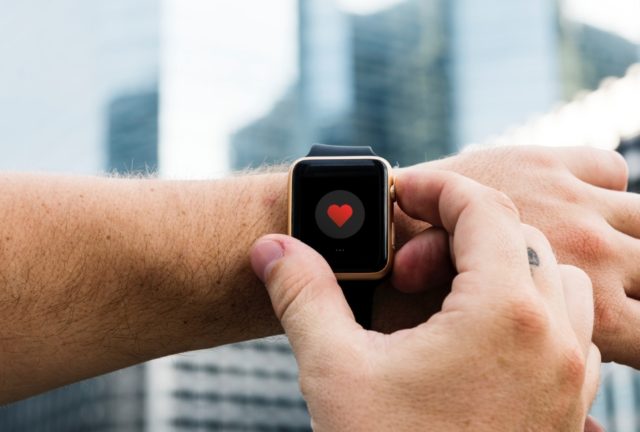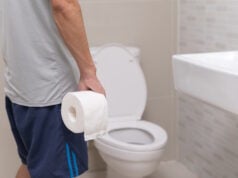
Wearable medical devices were once considered futuristic; however, they’re now a reality and come with many extended health benefits. The best wearable medical devices encourage proactive healthcare and the way most people deal with potential health issues. Wearable devices are also saving people money from going to the doctor every time they feel sick or suspect something out of the ordinary.
The truth is, for most people who experience a health problem, they go to see a doctor. In most cases, wearable medical devices can identify the health issue and help the wearer understand what’s wrong with them. They utilize advanced technologies that can instantly alert healthcare providers, paramedics, and family members.
Wearable medical devices are important, especially in the early stages. They can detect any irregularities before they become major health issues. The bottom line, these ingenious medical devices are helping people avoid serious health consequences and saving lives.
Below are the five best wearable medical devices currently on the market in 2019 and some information on how they’re used:
- Wearable Walking Data Devices
Walking is a very popular exercise that millions of people enjoy, and wearable walking data medical devices play a vital role in collecting data that your physician can use to increase your overall health. They’re used to monitor the stride length, symmetry, and gait speed, which are the basic walking mechanics for all people. People who suffer from certain health conditions such as AD, MS, and Parkinson’s disease, their walking speeds can fluctuate, and these devices can be used to collect their walking data over a certain duration or distance.
On the other hand, they also provide doctors with real-time monitoring technology through the use of portable monitoring devices. Sensors within watches, smartphones, and other wearable medical devices provide doctors with accurate information regarding their patient’s gait, which provides them with a vehicle to monitor their walking habits. This data can be enhanced even more with contact sensors located in a sock or shoe that provide the doctor with precise pressure readings.
- Wearable Sweat Sensors
Wearable sweat sensors are 1.5” diameter patches that are used by sticking them on the skin wherever they’re placed. They benefit professional athletes as well as the average person who incorporates high levels of cardiovascular exercise into their workout routines. They work by utilizing sensors that are built into the patch to send information and analyze sweat loss that can be read on smartphone apps. They’re also capable of being charged wirelessly, which makes them very user-friendly.
Samples of sweat are collected in the center of the patch with a micro-pore that fills a winding channel on the face of the wearable medical device. The micro-channels contain a chemical that reacts with the sweat samples, which causes the fluid to change colors.
The length of these channels will turn blue as the wearer loses sweat, a clear sign of hydration. Another channel changes color from pink to red, which monitors electrolyte loss. These devices can even tell the wearer how much water they need to put back in their bodies.
- Wearable Biosensor Wrist Devices
Smartwatches have become very popular when it comes to viewing emails, sending and receiving text messages, and keeping fitness data. New technologies such as biosensors are revolutionizing wearable medical devices. They work by incorporating artificial intelligence (AI) into the wrist device, and it can be used to detect specific cardiovascular diseases like hypertrophic cardiomyopathy, which is a serious health condition that commonly goes undetected during routine health exams.
They’re also used by physicians to take a diagnostic approach to detect certain health conditions by utilizing machine learning technologies that are programmed to the wearer’s height and weight as well as many other programmable parameters. Biosensor wrist wearables are vital and noninvasive medical devices that certainly have a bright future for both the medical professionals and wearers alike.
- Wearable Smartrings
One of the hottest trends for wearable medical devices in 2019 is the smartring. This medical device can be used to keep track of your steps, distances, and other biometric activities. It also incorporates a panic button for medical emergencies that are particularly helpful for those who have an unexpected medical situation occur and can’t respond because it utilizes the latest advancements in GPS technology that can be easily tracked by first responders.
The data collected on smartrings can be easily viewed on app-based wireless devices or home computers and shared with healthcare providers. Smartrings are also very popular due to their small size and astounding medical applications as well as offering the wearer the convenience of swiping payments, access into vehicles, and controlling home appliances.
- Wearable Smart Contact Lenses
Basic wearable smart contact lenses are worn just like normal contact lenses; moreover, they’re a noninvasive medical device that doesn’t require surgery. They work by resting on the eyeball, and they utilize micro versions of modern technology such as Bluetooth, data storage, autofocus lenses, radios, and more.
Advanced wearable smart contact lenses do require a surgical procedure that replaces existing contact lenses with electronic ones. These devices utilize the same technologies, but they’re also more robust and permanent.
These artificial lenses are used to take over the job of the retina that focuses on the light, which improves vision, balance, and coordination. Wearable smart contact lenses are also designed to retain energy and utilize power sensors that convert light into electrical power while piezoelectric sensors work to harvest the mechanical blinking-eye movement. These wearable medical devices are helping people to restore their vision and hold far-reaching possibilities for even more advancements in the optometry industry.
The Benefits of Wearable Medical Devices
The demand for wearable medical devices has seen a dramatic increase over the last few years, due to their health benefits of convenience and affordability as opposed to the costs of routine exams. These medical devices are encouraging self healthcare and provide the perfect medium for storing very accurate health data that can be remotely connected to healthcare providers who will then be able to check and monitor your health progress, and they can even tell the physician if you’re using your medications properly.












